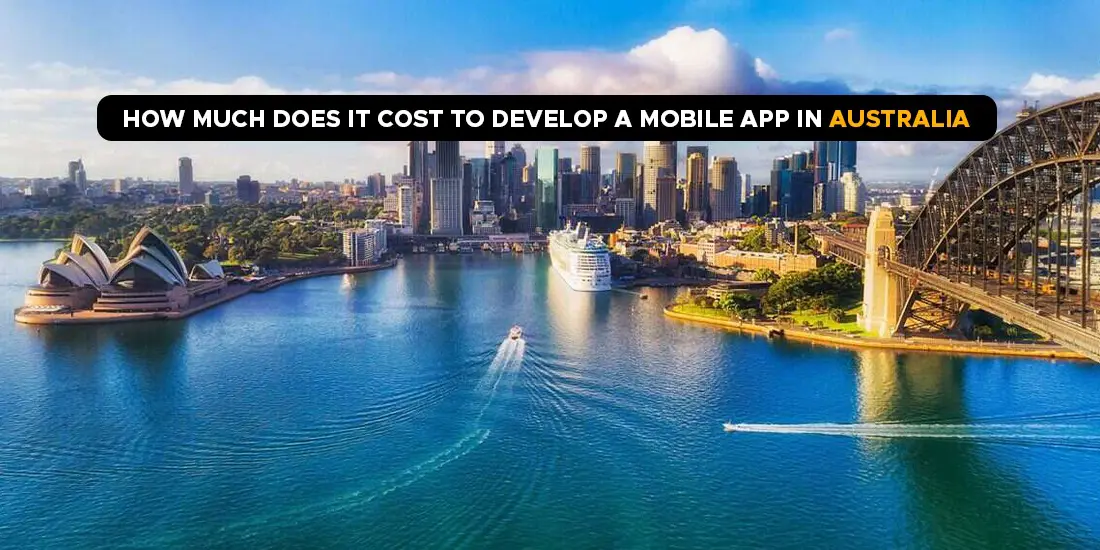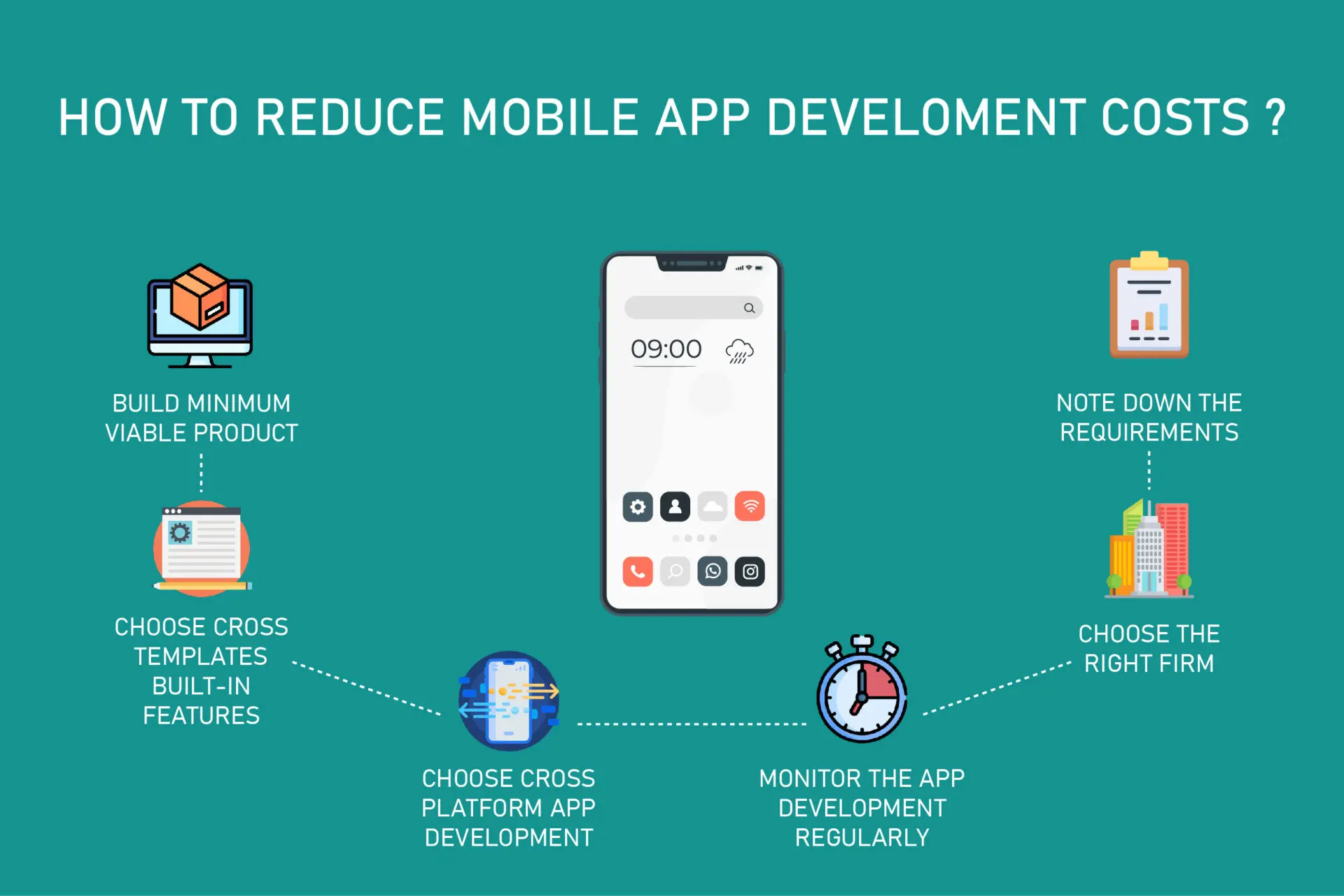How much does it cost to make an app? Sample Cost and Tips

Introduction
Hey there, future app mogul! So, you’ve got a killer app idea that will change the game, but now you’re wondering about the all-important question: How much will this cost me? Fear not, because we’re about to break it down for you in a fun and transparent way. Let’s dive into the app development costs in Australia and equip you with the necessary knowledge!
App development cost in Australia: A general overview
First things first, mate – Australia is a fantastic place, but it’s not exactly a budget-friendly destination, and the same goes for app development. In the last few years, EasyIOT has developed more than more than 50 different mobile applications. Among them, we’ve developed simple mobile apps that don’t require an internet connection for less than AUD 20,000 and complicated mobile apps for local government for over AUD 200,000. As you can see, the cost of making an app can vary, but on average, you’re looking at somewhere between AUD 30,000 and AUD 150,000. Yep, it’s an investment, but remember, Rome wasn’t built in a day, and great apps aren’t either.
Importance of understanding the cost of building an app:
Understanding the cost of building an app is like knowing the price of the ingredients before cooking up a storm in the kitchen. It helps you plan and make informed decisions and ensures you won’t be hit with a financial tsunami halfway through development. It’s all about being prepared and setting realistic expectations – crucial for keeping your sanity intact!
Factors influencing the app development cost
Now, let’s get into the nitty-gritty. The cost of making an app isn’t a one-size-fits-all deal; various factors influence it. Here are the main ones:
1. App Complexity:
Think of a basic app as a leisurely bike ride – uncomplicated and straightforward. With simple functionalities, these apps reside on the lower end of the cost spectrum. They’re the two-wheeled wonders of the app world, cost-efficient and swift to develop.
Now, picture upgrading from a humble bicycle to a futuristic spaceship. As your app’s features and complexity soar, so does the cost. Advanced functionalities, intricate designs, and complex algorithms all contribute to turning your app into a financial spaceship. While the journey may be grand, be prepared for the financial lift-off.
2. Platform:
Developing for both iOS and Android is like orchestrating a grand symphony. While it opens the door to a broader audience, it introduces complexities. Each platform has its quirks, requiring separate coding and adjustments. It’s double the trouble but also double the audience reach. Remember that accommodating both platforms affects development time and, inevitably, costs.
3. Design and User Experience:
A sleek design and a user-friendly experience are the cornerstones of a successful app. However, excellence comes at a price. Investing in a top-notch UX/UI designer pays off in spades by enhancing user satisfaction and engagement. The cost might be higher upfront, but the long-term benefits of user retention and positive reviews make it a wise investment.
4. Integration of Features:
Are you dreaming of your app seamlessly syncing with other services or boasting augmented reality features? Such aspirations elevate your app’s capabilities but also raise the financial stakes. Integration of advanced features demands additional development hours and expertise, translating to increased costs. It’s a trade-off between functionality and budget.
5. Testing and Debugging:
Like unwelcome guests at a party, bugs are known for appearing uninvited in your app. Budgeting for thorough testing and debugging is your secret weapon to banish these party crashers. While it adds to your expenses, a bug-free app is essential for maintaining a positive user experience and the overall success of your digital soirée.
Example of app development breakdown cost
Let’s break it down with a hypothetical scenario. Say you’re creating a mid-level complexity app for both iOS and Android, with intricate features, a killer design, and seamless integration. Here’s a rough cost breakdown:
- Development: AUD 40,000
- Design: AUD 15,000
- Testing/Quality Assurance: AUD 15,000
- Project Management: AUD 10,000
- Contingency (for those surprise expenses): AUD 10,000
Total Estimated Cost: AUD 90,000
Remember, these numbers can vary, but they give you a ballpark figure to start planning.
Tips for a successful and cost-efficient app development
Now, let’s ensure you’re not just spending money but investing wisely. Here are some tips to keep your app development costs in check:
1. Start with a Clear Vision:
Before the first line of code, paint a clear picture of your app. Outline its features and functionalities meticulously. This blueprint not only guides developers but also prevents costly changes mid-development. It’s like having a GPS for your project – keeping you on the right path and avoiding unnecessary detours.
2. Prioritise Features:
Identify must-have features and separate them from the nice-to-haves. Launching with essential functionalities lets you get your app off the ground faster and cost-effectively. Think of it as building the foundation before adding the rooftop terrace.
3. Cross-Platform Consideration:
Dip one foot first instead of diving headfirst into the deep end of both iOS and Android development. Start with one platform to test the waters and gather user feedback. Expand to the other platform once you’ve fine-tuned your app based on initial responses. It’s a strategic approach that minimises risks and development costs.
4. Invest in a Great Design:
Cutting corners on design may seem like a shortcut to savings, but it often backfires. Investing in a user-friendly and visually appealing design is worth its weight in gold. A well-designed app enhances user experience, reduces the need for major overhauls in the future, and fosters positive user reviews – an invaluable asset in the competitive app landscape.
5. Continuous Testing:
Testing isn’t just a phase; it’s a constant companion throughout development. Regular testing identifies and addresses issues early, minimising the chance of major bugs sneaking into the final product. While it adds to initial costs, consider it an insurance policy against the potentially extensive expenses of debugging.
6. Flexibility in Budget:
In the unpredictable seas of app development, surprises are inevitable. To weather these storms, maintain a contingency fund in your budget. Believe it or not, these surprises have a way of sneaking in. A financial safety net ensures you can handle unforeseen challenges without capsizing your entire budget.
Conclusions
And there you have it, app adventurer! The cost of making an app is a puzzle, but armed with this knowledge, you’re better equipped to tackle it head-on. Understand the factors, plan wisely, and follow these tips to ensure your app development journey is successful and budget-friendly.
If you’re interested in hearing about the cost of developing your mobile app from an unbiased 3rd party, simply reach out to our mobile app experts at EasyIOT. We’ll chat with you, understand your requirements, and offer an honest opinion about what you should expect to make your idea come true.
Frequently Asked Questions
1. How much does it cost to make an app by yourself?
Making an app yourself can be cost-effective, especially if you have the skills to handle development, design, and other aspects. However, the cost can still vary based on complexity and features. If you’re a skilled developer, you only need to cover expenses like app store fees (roughly $99/year for Apple and $25 one-time for Android), domain registration, and server costs. If you’re outsourcing certain tasks or using third-party services, the price could range from a few hundred to a few thousand dollars. So, the DIY approach can significantly cut costs, but it depends on your skill set and the app’s complexity.
2. How much does it cost to make an app overseas, such as in India?
Creating an app overseas can be cost-effective, as labour and development rates vary across regions. Popular outsourcing destinations include Eastern Europe, Asia, and Latin America. On average, development costs range from $5,000 to $100,000 or more, depending on your app’s complexity and the development team’s expertise.
Using India as an example, Developing an app in India is often more cost-effective due to lower labour and development costs. On average, development costs range from $5,000 to $50,000. India has a robust IT industry with skilled professionals, making it an attractive outsourcing destination. However, carefully vetting potential partners and considering communication, cultural differences, and project management tools is crucial.
3. How much does it cost to maintain an app?
Maintaining an app involves ongoing expenses ranging from 20% to 50% of the initial annual development cost. These costs include:
- Server Hosting: Expenses associated with hosting your app’s data and services. Cloud-based solutions like AWS or Azure offer flexibility with related costs.
- Bug Fixes and Updates: Regular updates and bug fixes are crucial for a seamless user experience. Costs depend on the complexity of changes and the frequency of updates.
- Security Updates: Ensuring your app remains secure through regular updates. Additional costs may arise, especially for critical fixes.
- Feature Enhancements: If you plan to add new features for competitiveness, budget for developing and implementing these enhancements
- App Store Fees: Don’t forget the ongoing fees for maintaining your app on app stores, such as the annual fees charged by Apple and Google.
Understanding and budgeting for these ongoing maintenance costs is crucial for your app’s long-term success and sustainability. It ensures your app remains functional, secure, and up-to-date in a rapidly evolving tech landscape.







